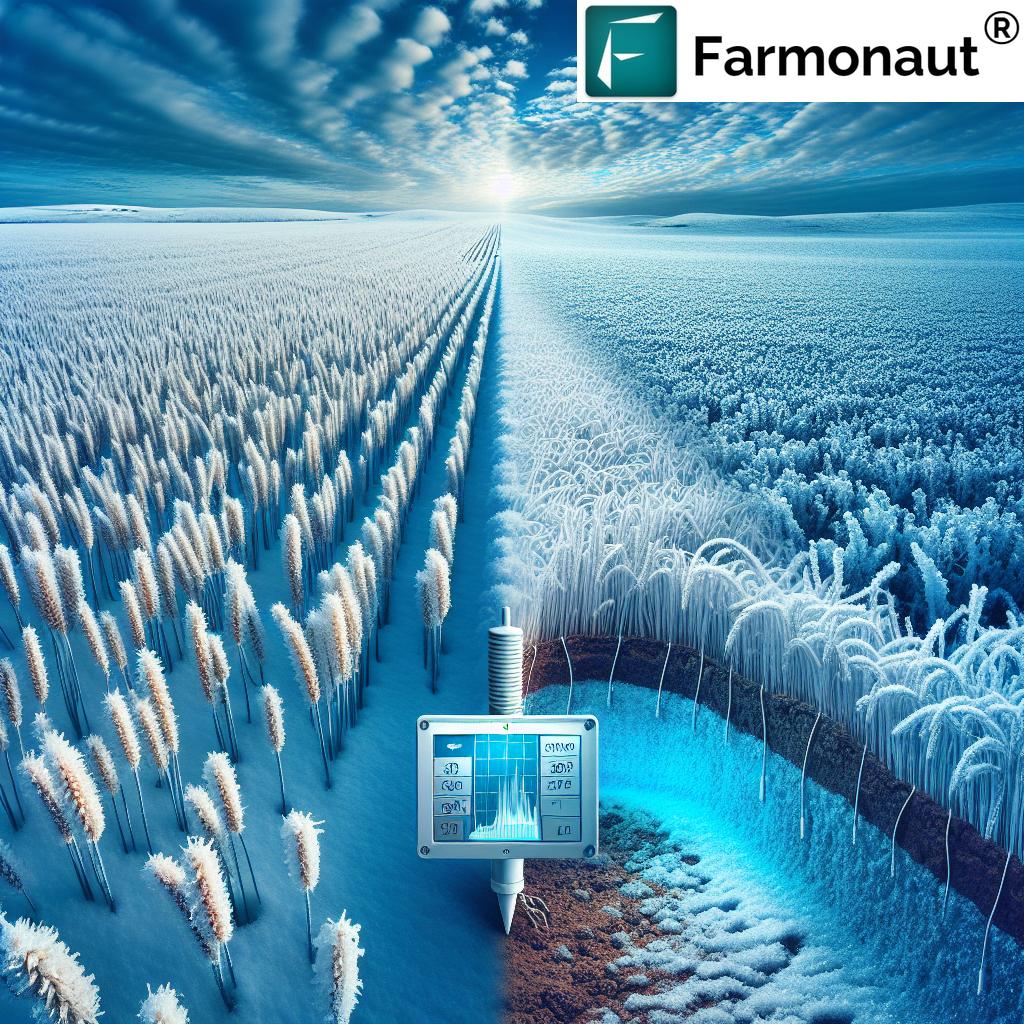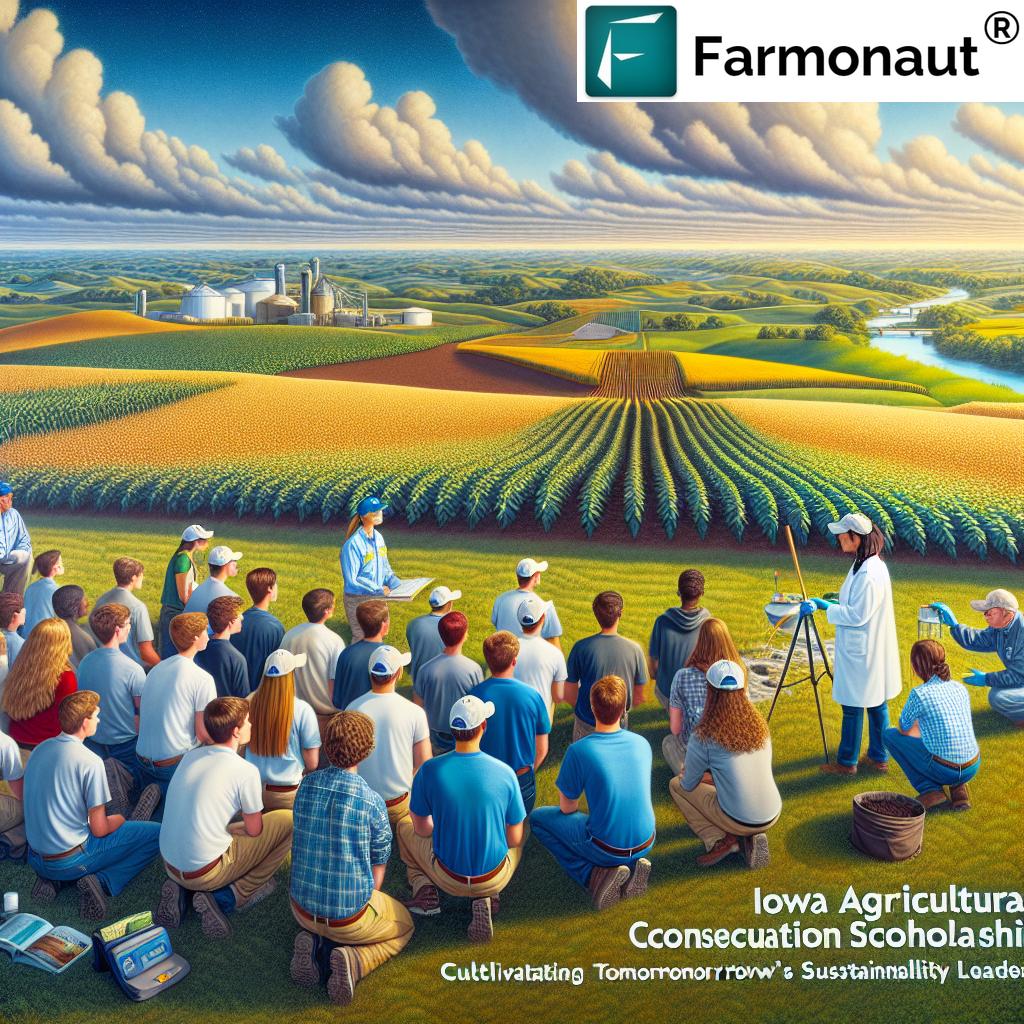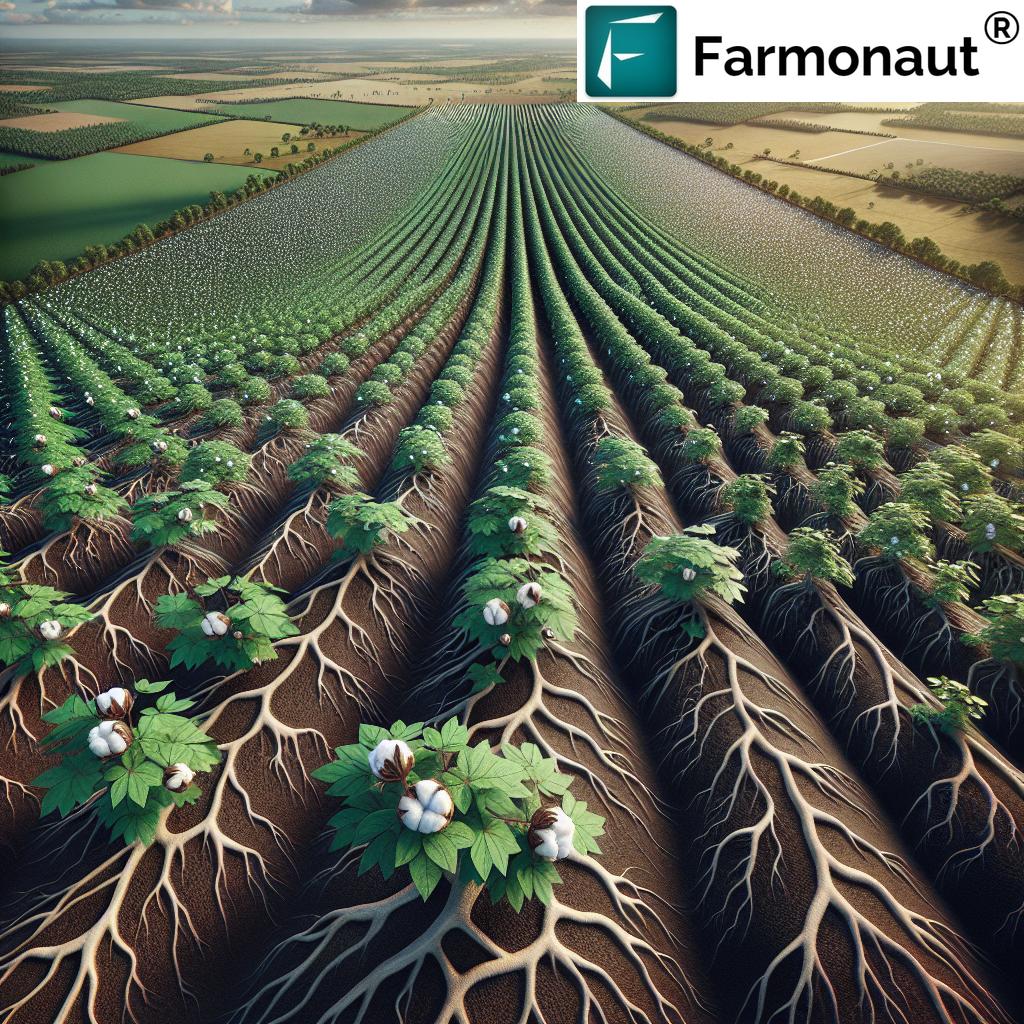Georgia Agriculture in 21st Century: 7 Key Accurate Facts
Table of Contents
- Introduction
- Summary: Georgia Agriculture in the Early 21st Century and the Role of Modern Farming Technology
- Trivia: Did You Know?
- Georgia’s Agricultural Landscape in 2025
- Comparative Overview: Traditional vs Modern Practices
- 7 Key Accurate Facts About Georgia Agriculture in the 21st Century
- 1. Advanced 21st Century Farming Technology Defines Georgia Agriculture
- 2. Georgia’s Crop Production Is Diverse and Dynamic
- 3. Sustainable Practices and Environmental Stewardship Take Priority
- 4. Poultry Production Positions Georgia as a National Leader
- 5. Data-Driven Management Optimizes Yields and Inputs
- 6. Climate Resilience and Adaptive Management Are Critical
- 7. Strong Economic Impact and Global Relevance
- Farmonaut: Satellite-Driven Solutions Empowering Georgia’s Agriculture
- Current Challenges and the Future of Georgia Agriculture
- Farmonaut Subscription Plans
- FAQ: Georgia Agriculture in the 21st Century
- Conclusion
Introduction
Georgia agriculture in the 21st century is a thriving, technologically advanced sector—one that seamlessly blends time-honored traditions with groundbreaking innovation. The state’s farmers are not only stewards of the land, but also forward-thinking adopters of 21st century farming technology that places Georgia on the map as one of the United States’ most progressive agricultural states. In this blog, we’ll answer the popular question: “Which statement regarding Georgia agriculture in the early-21st century is most accurate?” By exploring the facts, trends, and technologies shaping Georgia’s agricultural landscape in 2025, we provide a comprehensive look at the state’s agricultural future.
Summary: Georgia Agriculture in the Early 21st Century and the Role of Modern Farming Technology
What is Georgia agriculture? It is a robust, evolving sector that for decades has formed the backbone of the state’s economy and culture. From peanuts to cotton to poultry, Georgia’s diverse crop production is powered by innovative practices and transformative technologies. As we step into 2025, the adoption of technologies such as drones, sensors, smart irrigation, precision equipment, and advanced genetics continues to boost yields, reduce inputs, and help the state meet evolving market demands. In this dynamic landscape, sustainable farming and environmental management are not just buzzwords—they’re critical components of daily agricultural practice.
Trivia: Did You Know?
“Georgia produces over 40% of the U.S. peanuts, making it the nation’s top peanut producer in the 21st century.”
Georgia’s Agricultural Landscape in 2025
In exploring Georgia agriculture in 2025, it’s vital to understand the significant transformation the sector has undergone. Historically, this state was recognized for its traditional crops—notably cotton and peanuts—and as a powerhouse of poultry production. Today, Georgia agriculture is a microcosm of change—an agricultural sector that embraces sustainable practices, smart technology, and adaptive management in response to evolving climate conditions and market challenges. The state’s farmers leverage both legacy and modern farming to deliver impressive yields and economic impact, while balancing productivity with stewardship of the environment.
Among the most accurate characterizations of Georgia’s approach to agriculture today are:
- Rapid adoption of precision and satellite-driven technologies
- Commitment to environmental sustainability alongside productivity
- A diversified crop portfolio—from specially improved seeds for resilience to high-value specialty crops
- Emergence as a nationwide leader in poultry production
- Increased attention to soil health, efficient irrigation systems, and innovative agronomic practices
With over 9 million acres devoted to agricultural output, Georgia’s success story is shaped by both its rural communities and their willingness to innovate.
Comparative Overview: Traditional Practices vs Modern Practices in Georgia Agriculture
| Area | Traditional Practices (Pre-21st Century) | Modern Practices (21st Century) |
|---|---|---|
| Crop Yield (Est.) | Peanuts: ~2,000 lbs/acre Cotton: ~600 lbs/acre |
Peanuts: 4,000+ lbs/acre Cotton: 1,000+ lbs/acre (with precision agriculture) |
| Technology Adoption | Conventional tools, manual labor, basic equipment | Smart tractors, drones, AI-based decision support, satellite-based monitoring, IoT sensors |
| Main Crops Grown | Cotton, peanuts, tobacco, corn, soybeans | Poultry, cotton, peanuts, pecans, blueberries, peaches, specialty crops, broilers |
| Sustainable Techniques | Limited soil conservation, conventional tillage, high chemical use | No-till, cover crops, integrated pest management, water-efficient irrigation, carbon footprint monitoring |
| Economic Impact | ~$6 billion contribution to state GDP (late 20th c.) | $74.3 billion annual economic impact (~15% of state GDP in 2025) |
| Export Volume | Limited; focused on regional markets; ~10% of production exported | Expanded global markets; 20–25% of major crop production exported internationally |
“Over 9 million acres in Georgia are dedicated to agriculture, powered by advanced technology and sustainable practices.”
7 Key Accurate Facts About Georgia Agriculture in the 21st Century
1. Advanced 21st Century Farming Technology Defines Georgia Agriculture
Which of the following is most accurate about agriculture today in Georgia? The answer lies in the transformative role of 21st century farming technology. Georgia’s farmers employ an integrated suite of technological solutions—including GPS-guided tractors, drones, sensors, and satellite-based analytics—to optimize crop health, monitor soil moisture, and streamline the use of vital inputs such as water and fertilizers.
From automatic irrigation systems that respond to real-time weather fluctuations, to AI-powered pest identification and management, these tools enable unprecedented precision. For example:
- GPS-based planting and harvesting reduces overlaps and missed rows—saving both fuel and seed.
- Drone-based crop scouting identifies emerging issues before they escalate, supporting faster and more informed management decisions.
- IoT sensors in the field deliver constant streams of data on soil, crop health, and microclimate.
Technology adoption drives sustainable growth and optimized yields—a model for other states to follow.
Farmers who leverage satellite-based data can now react instantly to changes in climate patterns or pest movements. Contact Farmonaut’s Satellite Solutions for actionable insights that empower smarter agricultural management.
Benefit highlight: Farmonaut’s Carbon Footprinting Tools offer Georgia’s agricultural sector an effective way to constantly monitor and minimize the environmental impact of large-scale farming.
2. Georgia’s Crop Production Is Diverse and Dynamic
When asking what is Georgia agriculture and why it matters, the answer is diversity. By 2025, the state produces not just its historic staples—cotton, peanuts, pecans, blueberries, peaches, and poultry—but also an array of specialty crops that meet changing market demands. Georgia is now a leading national and global producer of:
- Poultry (broilers and eggs)
- Peanuts
- Cotton
- Pecans
- Blueberries
- Vegetables (onions, watermelon, sweet corn)
- Specialty and organic crops
This diverse production mitigates risks associated with fluctuating climate conditions and commodity prices—making Georgia agriculture in the 21st century especially resilient.
Farmers who embrace advanced crop monitoring tools improve productivity while maintaining flexibility—crucial for Georgia’s ever-evolving agricultural landscape.
3. Sustainable Practices and Environmental Stewardship Take Priority
Georgia’s agricultural sector increasingly values sustainability as a guiding principle. Sustainable practices—like no-till farming, cover crops, integrated pest management (IPM), and water-efficient irrigation systems—are widely adopted. This helps maintain and improve soil health, reduce inputs, and protect neighboring ecosystems.
Farmers are not just producing more—they’re producing smarter. Which of the following is most accurate about agriculture today? That sustainability and profitability go hand in hand. Modern technological advancements let farmers meet growing market demands while preserving Georgia’s beautiful natural landscape.
Farmonaut’s environmental impact monitoring provides real-time carbon footprinting and emissions tracking for agricultural operations—helping the industry comply with regulations and empowering Georgia farmers on their sustainability journey.
Technologies like real-time moisture monitoring and satellite-based crop health analytics play a pivotal role in applying the right amount of inputs at the right time—minimizing cost, waste, and environmental impact.
4. Poultry Production Positions Georgia as a National Leader
Among the most accurate statements about Georgia agriculture in the 21st century is the scale and modernity of its poultry production. As of 2025, Georgia remains the #1 poultry producing state nationwide, with broiler production as the dominant sector. Advanced automation, smart farm management, and data-driven biosecurity protocols ensure high productivity and food safety.
- Modern poultry operations use automated climate control and GPS-guided resource allocation to optimize living conditions and growth rates.
- Satellite-powered monitoring rapidly identifies any health or environmental issues, allowing swift corrective action.
This sector’s economic impact is striking, contributing billions annually to Georgia’s economy and supporting rural communities statewide.
See how satellite-based farm monitoring helps optimize resource use for both crop and livestock enterprises:
- Farmonaut’s Large Scale Farm Management tool (Agro-Admin App) enables agriculture managers to monitor vast fields, streamline labor, and improve overall yield on poultry and mixed enterprises.
5. Data-Driven Management Optimizes Yields and Inputs
One of the most notable trends in modern Georgia agriculture is the strategic use of data throughout the production cycle. Sensors, AI systems, and remote satellite monitoring feed insights directly to farmers’ mobile devices, informing daily and seasonal decisions on everything from fertilizer rates to irrigation timing.
Data analytics in Georgia’s agriculture sector helps to:
- Pinpoint zones of stress or pest pressure via drone and satellite imagery
- Customize input plans based on localized soil and weather data
- Forecast yield potential under various climate scenarios
- Track daily, weekly, seasonal operations for continual improvement
Accessing real-time and predictive information transforms farm management—enabling efficient resource use, maximized productivity, and improved economic outcomes for Georgia’s farmers.
For developers, integrating satellite and weather APIs—such as Farmonaut’s API—enables bespoke data solutions that are tailor-made for the needs of modern Georgia farms. Visit our API Developer Docs to empower your own agriculture applications.
6. Climate Resilience and Adaptive Management Are Critical
The 21st century brings new climate challenges—more frequent droughts, unpredictable rainfall, and temperature fluctuations—to Georgia’s farms. The most accurate assessment is that Georgia agriculture has become increasingly resilient by:
- Developing and adopting genetically improved seed varieties that offer enhanced resistance to weather extremes, pests, and diseases.
- Deploying moisture sensors, automated irrigation systems, and robust weather monitoring technology.
- Implementing rotational cropping and cover cropping to bolster soil health and water retention.
Tech-enabled adaptation ensures that Georgia’s agricultural output can meet both present and future food security needs—despite unpredictable
climate conditions.
7. Strong Economic Impact and Global Relevance
As of 2025, Georgia agriculture represents a $74.3 billion annual economic impact. It provides direct employment to over 340,000 people and indirect employment to hundreds of thousands more across value chains, transport, services, and processing. Thanks to advanced farming technologies and global market access, Georgia’s crops and poultry products reach consumers not only nationally but worldwide.
The emphasis on blockchain-based traceability—with secure, data-rich supply chains as enabled by platforms like Farmonaut Traceability—means Georgia foods are trusted internationally. This builds further resilience against commodity market volatility and growing consumer demands for quality and transparency.
Farmonaut: Satellite-Driven Solutions Empowering Georgia’s Agriculture
At Farmonaut, we leverage satellite imagery, AI, and blockchain technologies to equip Georgia’s agriculture with powerful, affordable, and scalable solutions. Our platform enables:
- Real-time monitoring of crop health using NDVI and multispectral data, unlocking precision management
- AI-based advisory systems that support planting, resource management, and pest/disease alerts
- Moisture and soil analytics for irrigation and input optimization, minimizing waste and improving sustainability
- Blockchain-based traceability that guarantees transparent supply chains—crucial for export and consumer trust
- Fleet management tools for optimizing logistics and equipment use across large, modern farms
Farmonaut solutions are available via Android, iOS, and web apps, making it easy for both smallholders and large enterprises to stay ahead of every challenge.

Learn more: Farmonaut’s Fleet and Resource Management helps optimize transport, reduce operational costs, and improve equipment safety on large farms in Georgia
Our AI-driven Crop Plantation and Forest Advisory solutions enable farmers to access expert recommendations for rotational strategies, biodiversity enhancement, and adaptive techniques based on satellite-driven insights. This way, Georgia’s leading-edge farmers remain prepared for whatever future the climate brings.
Focused on accessibility, Farmonaut operates a subscription-based model for all operation sizes, and APIs for custom integration.
Developers and agri-finance institutions: Access Farmonaut’s Satellite & Weather API or Satellite-based Verification for Crop Loans & Insurance to make Georgian agriculture finance smarter, faster, and fraud-resistant.
Explore the Developer Docs for integrating advanced geospatial analytics into your agriculture platforms.
Farmonaut Subscription Plans
Choose a subscription plan that matches your needs, from small farms to large agribusiness. Benefit from the power of geospatial intelligence and advanced analytics—no expensive hardware required.
Challenges and Future Outlook for Georgia Agriculture
Despite its remarkable technological and organizational progress, Georgia agriculture still faces significant challenges that demand continual adaptation and evolution:
- Climate Change: Increasing weather variability (including droughts and heavy rainfall) makes resilient crop management and adaptive strategies a necessity.
- Labor Shortages: Automation and robotics are bridging the labor gap, but there is still a need for skilled workers capable of deploying and interpreting advanced technologies.
- Market Fluctuations: Commodity price volatility requires innovative risk management and diversified production plans.
- Environmental Regulations: Balancing environmental sustainability with economic returns demands constant innovation, such as investment in blockchain traceability and carbon monitoring.
Into the future, Georgia agriculture is poised for further transformation:
- The next wave of robotics, genetic engineering, and vertical farming will likely broaden the state’s agricultural horizons and drive new levels of productivity and resilience.
- Integration of AI and satellite-driven solutions (like those offered by Farmonaut) will further enhance predictive planning, resource allocation, and real-time risk alerts.
- Enabled by satellite-based traceability systems, Georgia’s produce will retain access to the most demanding and lucrative markets globally.
FAQ: Georgia Agriculture in the 21st Century
Which statement regarding Georgia agriculture in the early-21st century is most accurate?
Georgia agriculture transitioned from traditional, labor-intensive practices to a technologically advanced and diversified model—embracing precision farming, sustainability, and data-driven resource management as key drivers of productivity and environmental stewardship by 2025.
Which of the following is most accurate about agriculture today in Georgia?
Agriculture in Georgia today is marked by its integration of advanced technology (drones, sensors, AI, satellite monitoring), its commitment to sustainable practices, and its strong impact on the state’s economy and food systems.
How have satellite technologies changed Georgia’s agriculture sector?
Satellite technologies enable real-time, field-specific monitoring of crop health, soil moisture, weed and pest infestations, and resource use. This allows for precision farming where inputs are optimized, environmental impact is minimized, and yields are maximized—benefiting both large and small farms.
What crops dominate Georgia’s agricultural production in 2025?
Georgia’s leading crops in 2025 include peanuts, cotton, poultry (broilers), pecans, blueberries, and specialty vegetables. This diversity makes the state’s agriculture more resilient and adaptable.
How significant is the economic impact of Georgia agriculture?
Georgia agriculture contributes over $74 billion annually to the state economy, sustaining jobs, supporting rural communities, and fueling exports to national and international markets.
What is Farmonaut’s role in Georgia agriculture?
Farmonaut provides satellite-driven, AI-powered solutions for real-time farm monitoring, environmental tracking, resource management, and traceability—enabling farmers and agribusinesses to improve yields, reduce costs, and adopt sustainable practices easily and affordably.
Conclusion: Georgia Agriculture in the 21st Century—Innovation, Sustainability, and Resilience
In summary, which statement regarding Georgia agriculture in the early-21st century is most accurate?
Georgia agriculture has evolved into one of the most technologically advanced, sustainable, and economically significant agricultural sectors in the United States. With a commitment to precision technologies, resilient crop varieties, and environmental stewardship, Georgia’s farmers and agricultural enterprises are uniquely prepared for both the challenges and the opportunities of the future.
As the state continues to embrace technological advancements—from AI and satellite monitoring to blockchain-based traceability—its role as a leader in agricultural innovation will only grow. The success of Georgia agriculture is rooted in its people, its diverse landscape, and its unwavering focus on progress and sustainability.
Let’s continue exploring new frontiers in agricultural technology and data-driven solutions to ensure food security, economic vitality, and a flourishing environment for generations to come.













